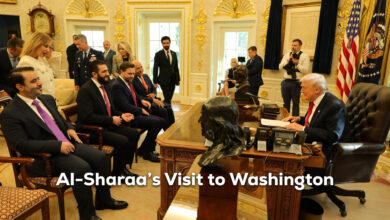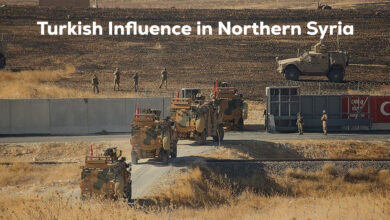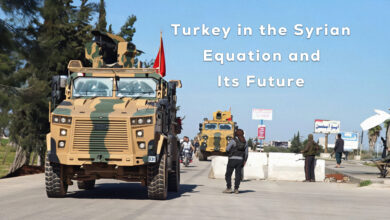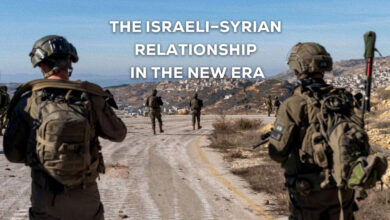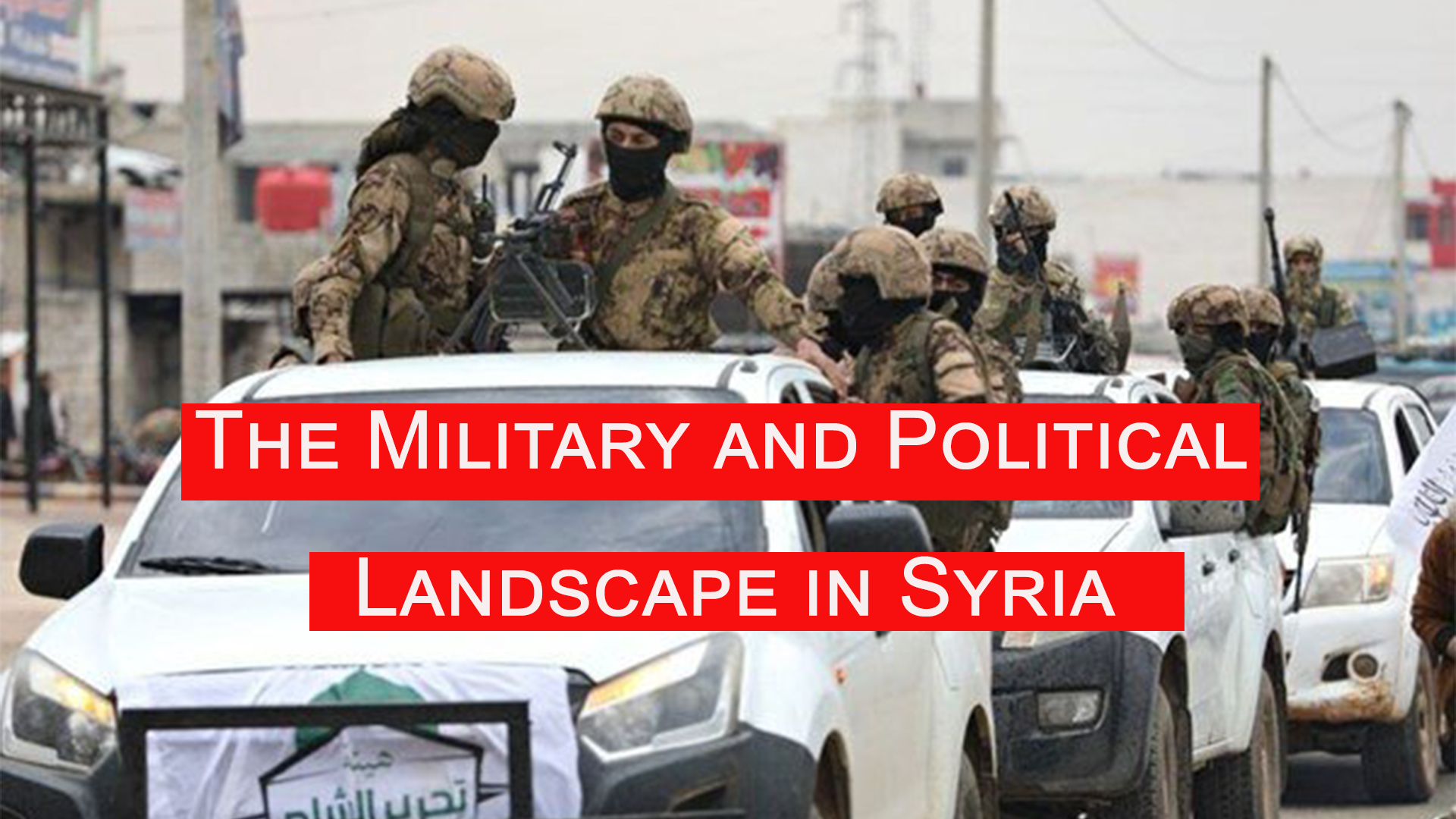
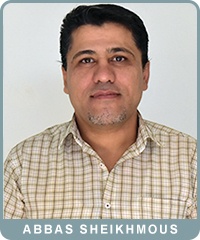 The situation in Syria remains unstable, even after the fall of the Baathist regime. The newly established regime is facing numerous challenges, largely due to its exclusionary, one-color policy that is influenced by both domestic and foreign agendas. Without political stability, economic recovery is unattainable. Although the lifting of economic sanctions on Syria and its removal from the list of state sponsors of terrorism—measures intended to give the regime a chance to rebuild the country and eliminate terrorism—hold symbolic significance, they do not reflect genuine international openness toward Syria, nor do they suggest that the new regime has gained the trust of the global community. The international coalition’s refusal to integrate the new Syrian army into the fight against ISIS underscores the lack of trust in this military force. The United States and Western countries may yet reclassify Syria as a state sponsor of terrorism as long as the new regime—despite rebranding—continues committing atrocities against Syrian sectarian communities.
The situation in Syria remains unstable, even after the fall of the Baathist regime. The newly established regime is facing numerous challenges, largely due to its exclusionary, one-color policy that is influenced by both domestic and foreign agendas. Without political stability, economic recovery is unattainable. Although the lifting of economic sanctions on Syria and its removal from the list of state sponsors of terrorism—measures intended to give the regime a chance to rebuild the country and eliminate terrorism—hold symbolic significance, they do not reflect genuine international openness toward Syria, nor do they suggest that the new regime has gained the trust of the global community. The international coalition’s refusal to integrate the new Syrian army into the fight against ISIS underscores the lack of trust in this military force. The United States and Western countries may yet reclassify Syria as a state sponsor of terrorism as long as the new regime—despite rebranding—continues committing atrocities against Syrian sectarian communities.
Military Landscape
Syria currently hosts two primary military forces. At the forefront are the Syrian Democratic Forces (SDF), considered the most organized, best armed, and most reliable by the international community, which relies on them in the ongoing fight against ISIS. The second is the New Syrian Army, which remains surrounded by question marks due to its lack of organization and loyalty.
Additionally, there is the so-called Syrian National Army—Turkey’s proxy force occupying northern Syria. This force has so far refused to join the New Syrian Army, despite the defection of several of its factions such as the Hamzat Division, the Sultan Suleiman Shah Division (al-Amshat), and Ahrar al-Sharqiya, all of which remain loyal to Turkey. This continued allegiance raises further doubts about the New Syrian Army, which also includes the Free Syrian Army faction in al-Tanf that operates in coordination with the international coalition’s anti-ISIS strategy. Meanwhile, the Military Council in Suwayda is still in the process of formation due to internal disagreements among its armed factions, though it has demonstrated its presence during recent events.
Syria cannot achieve stability amid a patchwork of military forces with divergent loyalties, the spread of extremist ideology, and a pervasive lack of security. The bombing of St. Elias Church in the Dweilaa district of Damascus and earlier massacres against the Alawite community in the coastal region illustrate this instability. UN reports have confirmed that Turkish-backed factions, such as the Hamzat, the Amshat, and foreign fighters within the New Syrian Army, were responsible for these massacres, aided by their military commanders. Similar atrocities have recently been committed against the Druze community in Suwayda by groups rebranded as “Tribal Forces.”
The new regime’s military mindset—its refusal to recognize armed forces outside its structure, despite the New Syrian Army’s lack of national doctrine and diverse loyalties—aligns it more with jihadist ideology than with a commitment to the Syrian nation or to peace and stability. The SDF, which is evolving into a regular army as its ranks grow, refuses to integrate into the New Syrian Army in its current form unless granted autonomy and unified command—especially given the ongoing abuses perpetrated by terrorist factions under various names within the New Syrian Army against the Syrian people.
Tensions remain particularly severe with terrorist factions such as the Hamzat, Amshat, and Ahrar al-Sharqiya, whose leaders have been appointed to command roles within the New Syrian Army. The failure to build a genuine national army may lie in the new regime’s hasty incorporation of these extremist factions into the military structure and its failure to convene inclusive military meetings to establish a cohesive vision for the army’s formation. This suggests that the new regime prioritizes a religious military ideology over national interests. Consequently, it seems largely indifferent to the atrocities committed against the Alawite and Druze communities and to growing public discontent. Instead, it appears more focused on advancing its ideological agenda, currying favor with Turkey, and leveraging Turkish-backed factions and support to consolidate its rule.
If the current military situation persists, Syria may face severe consequences—especially amid the resurgence of ISIS, the rise of so-called “Tribal Forces,” and the deepening mistrust between the SDF and the new regime. Despite an agreement between General Mazloum Abdi, commander of the SDF, and interim President Ahmad al-Shara’, the new regime—backed by Turkey—seeks to impose its authority over the Autonomous Administration regions without making any concessions. It fosters discord and refuses dialogue with the SDF, adopting a policy reminiscent of the Baathist regime’s repression of democracy, freedom, and minority rights.
The regime’s denialism and imitation of the previous regime’s approach, combined with regional powers’ control over parts of Syria (Turkey in the north and Israel in the south), and the current fragmented military structure, may lead to a new and more dangerous crisis—possibly a civil war. The recent events in Suwayda serve as a stark warning, highlighting the breakdown of military discipline within the New Syrian Army and the interim government’s failure to assert control over its forces. These include groups operating under names like “Bedouin Militants” or “Tribal Forces,” which have been directly linked to the New Syrian Army and its affiliated public security forces. This may reflect a deliberate strategy by the new regime to obscure the violations committed by its military and security forces and to deflect responsibility for the massacres targeting the Druze in Suwayda.
Such developments may serve the interests of regional actors seeking to expand their influence. It is not inconceivable that regional powers, in coordination with the new authorities in Damascus, could mobilize these factions—particularly the so-called “Tribal Forces” presented as being outside of Damascus’s control—and deploy them east of the Euphrates. The goal would be to incite Arab-Kurdish conflict, disrupt coexistence among the region’s communities, and weaken both the SDF and the Autonomous Administration of North and East Syria.
The Political Landscape in Syria under the New Regime
Syria, under the new regime, remains far from achieving political stability. The current leadership is still heavily influenced by regional agendas and lacks the capacity to draw clear red lines to prevent foreign interference in political decision-making. This is partly due to its longstanding ties with various regional powers. Additionally, the regime’s prevailing mindset is fundamentally opposed to democratic pluralism. In fact, it appears to reject democratic principles altogether and seems inclined toward hereditary rule reminiscent of the Umayyad caliphate.
The interim president now holds extensive powers that allow him to dominate the legislative, executive, and judicial branches. As a result, the political situation in Syria is no less precarious than the military one. The political mindset of the regime mirrors its military mentality, with many top officials coming from military backgrounds. These individuals exhibit a strong belief in centralization and harbor deep-seated hostility toward the Autonomous Administration of North and East Syria (AANES), the Syrian Democratic Forces (SDF), and non-Sunni and non-Arab communities—such as the Alawites, Druze, Yazidis, Christians, Kurds, and others that make up Syria’s diverse mosaic. Their frequent public statements, often laced with animosity and chauvinism, are clear indicators of this exclusionary ideology.
The saying goes, “What the military ruins, the politicians can fix”—and vice versa. But in Syria’s case, both the political and military leaderships are fundamentally flawed. Their refusal to engage in inclusive national dialogue and insistence on preserving a centralized system prevents the new regime from leading Syria toward safety or recovery. Even if the international community were to normalize relations with the regime and lift sanctions, such developments would be meaningless without accompanying political and military stability. Foreign political and economic support is never unconditional; it serves the strategic interests of donor countries first, not those of the Syrian people. However, this support could help prolong the regime’s survival.
Foreign Interventions
Following the collapse of the Ba’athist regime, Syria has become a playground for regional powers—most notably Turkey and Israel—each seeking to expand its influence. Their involvement, driven by their own agendas, continues to shape Syria’s political and military landscape, especially given the new regime’s weakness.
Turkey
Turkey has been involved in the Syrian crisis from the outset, playing a largely destructive role. It has turned military factions in the Turkish-occupied north into mercenaries serving its agenda and has supported the Islamic State (ISIS). Even after the fall of the Ba’ath regime, Turkey has not acted as a neutral party striving for a democratic Syria or for the eradication of terrorist organizations. Despite its claims that Syria’s security is integral to its own, Turkey’s actions reveal the opposite. It continues to pursue a destabilizing policy in Syria, motivated by three primary objectives:
- Reviving the “National Pact” (Misak-ı Millî)** by occupying northern Syria, transforming it into exclusive Turkish zones through gradual Turkification, and integrating these areas into adjacent Turkish provinces—even if nominally they appear to remain part of Syria. Turkey also aims to expand toward Syria’s coast, which is part of a broader energy competition in the Middle East.
- Dismantling the AANES and eliminating the SDF, by promoting centralization in Syria and opposing any democratic reforms that could weaken the centralized state. This explains the new regime’s insistence on centralization and its portrayal of decentralization as synonymous with division. It also accounts for its rejection of any national dialogue aimed at building a future Syrian state. Turkey, possibly with support from Arab states like Qatar, may attempt to mobilize Arab tribes to launch attacks east of the Euphrates and commit atrocities against local communities.
- Establishing a Salafist government after failing to install a Muslim Brotherhood-led regime in Damascus. Turkey now seeks to take control of the new Syrian army by integrating its own mercenary factions (e.g., Hamzat, Sultan Murad, Ahrar al-Sharqiya, and foreign fighters) into its ranks, while also providing military and logistical support to the new regime.
Israel
Syria has traditionally been a central member of the so-called “Axis of Resistance,” maintaining strong influence over jihadist groups in Palestine and Lebanon and using them as leverage against Israel. However, the Syrian regime has never launched direct military operations against Israel, neither before nor after the Syrian crisis. Today, Syria is increasingly vulnerable to Israeli military actions.
Israel has consistently targeted radical organizations, strategic weapons depots, and any efforts to reestablish Iranian influence in Syria. Its strategic objectives in Syria include:
- Preventing Syria from acquiring significant military capabilities—both in manpower and equipment—that could pose a future threat to Israeli security. Israel seeks to prohibit any foreign military presence in southern Syria, except for locally formed military councils that pose no threat. It also aims to keep Syria weak, especially in intelligence capacity, while monitoring foreign fighters and jihadist groups.
- Maintaining its occupation of southern Syrian territories and establishing a demilitarized zone across the three provinces of Quneitra, Daraa, and Suwayda. Israel views so-called “Bedouin fighters” or “tribal forces” in the south as threats due to their potential activation by external powers. Israeli airstrikes targeting these unruly factions in Suwayda’s countryside and preventing their entry into the city reflect Israel’s perception of their danger to its national security.
- Pursuing normalization with Syria under Israeli conditions. Although full normalization with the new Syrian regime is unlikely in the near term, communications between the two sides may continue on security and military matters. A broader agreement may only be possible if Syria recognizes the Golan Heights as Israeli territory and consents to transforming southern Syria into a demilitarized zone under Israeli supervision.
Iran and Global Powers
Iran is attempting to regain some of its lost influence in Syria, particularly by leveraging tribal alliances in Deir ez-Zor, following the collapse of the Ba’athist regime and the near-total erosion of Iranian power in the country.
As for the major global powers involved in Syria—primarily the United States and Russia—their agendas differ from those of regional actors but remain closely tied to ensuring Israel’s security. While their objectives may diverge from regional powers in some respects, both global and regional players share an interest in keeping Syria weak and centralized.
Some regional states prefer Syria to remain a failed state—militarily, economically, and politically—as this suits their broader agendas. The United States, on the other hand, is primarily focused on protecting its own interests, which are somewhat linked to maintaining political and military stability in Syria. Washington is not particularly concerned with the structure of Syria’s government as long as it remains cooperative. What the U.S. truly seeks is regional stability under its influence, to counter China’s growing presence and to implement its economic projects in the region.
The Future of Syria Amid Current Realities
Syria’s future remains uncertain as the country’s two primary forces—the new regime in Damascus and the SDF—remain at odds over key issues. Both parties maintain diverging visions for Syria’s future. While the SDF has expressed a willingness to integrate into a restructured Syrian army and merge the institutions of the AANES with those of the central government, it insists on doing so according to specific principles. Notably, both sides have so far rejected a military solution to resolve their disputes.
This rejection could stem from a desire to avoid dragging Syria into another internal crisis that might escalate into civil war. Alternatively, it may indicate the new regime’s current inability to wage war against the SDF, despite mounting regional pressures in that direction. Another possibility is that Damascus is waiting for potential shifts in international policy toward the SDF and the Autonomous Administration, possibly linked to normalization efforts with Israel. The SDF’s strong ties to the United States, its partnership with the international coalition, and its military and grassroots support base represent the most significant challenge to the new regime.
In response, the regime has pursued closer ties with the U.S. and sought potential agreements with Israel that would serve its narrow interests. Its strategy aims to undermine the SDF’s legitimacy, disrupt its coalition partnership, and incite unrest in Arab-majority areas under the Autonomous Administration, relying heavily on the backing of Turkey’s occupation forces.
For its part, the SDF continues to insist on preserving its distinct structure within a newly envisioned Syrian military. It remains committed to a decentralized political system, firmly rejecting a return to centralized rule or the historical marginalization of the region’s diverse communities. The SDF is determined to prevent Syria’s regression to its pre-2011 authoritarian model, which the current regime appears to be replicating. Its stance is rooted in a democratic ideology and enjoys strong support from most of the region’s ethnic and religious groups.
Despite the existence of a framework for negotiations—namely the Abdi-Sharaa Agreement—talks between the two sides have stalled, pushing Syria toward three possible outcomes:
- Stalemate and Escalation
The status quo may persist as both parties await shifts in the international political and military landscape. A major international policy shift could tip the scales in favor of one side, enabling it to impose its vision. However, this waiting game could ignite conflict, especially if either side attempts to assert dominance through force rather than negotiation.
- A Western-Brokered Agreement
A breakthrough agreement might be reached with backing from Western countries such as the U.S. and France, paving the way to build a democratic Syria. This scenario, however, hinges on significant international pressure to curb regional powers—particularly those influencing Damascus—from interfering in Syria’s internal affairs. While possible, this path remains unlikely in the current phase and may depend on the success of Abdullah Öcalan’s peace initiative in Turkey, which could have a ripple effect throughout the region.
- Proxy Conflict Through Arab Tribes
Regional actors and the new regime may mobilize Arab tribal forces—some of which were previously aligned with the former regime, Iran, or Turkey—against the Autonomous Administration. These tribes, now under the sway of the new regime and foreign powers, are officially outside Damascus’ authority but are in reality closely tied to it. Many of their fighters are part of the new Syrian army, including factions formerly designated as extremist and elements of the General Security apparatus. If these forces are unleashed against SDF-held areas, Syria risks spiraling back to the chaos of early conflict, given the SDF’s unique organizational strength and military capability compared to coastal and southern regions.
Conclusion
Despite the fall of the Ba’athist regime in Damascus, Syria’s internal situation remains deeply unstable due to the chaotic, security-driven policies of the new regime toward the country’s diverse communities. These policies—rooted in the regime’s ideological stance—have fueled massacres against Alawite and Druze populations and continued Turkey-backed demographic engineering against Kurds in northern Syria. Such actions have severely undermined communal coexistence and triggered dangerous sectarian and religious tensions.
Any military action—regardless of its justification—against the SDF will likely plunge Syria into deeper turmoil and potentially ignite a sectarian war. The fate of the country’s political and military landscape now rests heavily on the success of Abdullah Öcalan’s peace initiative in Turkey. If successful, this initiative could neutralize Turkey’s destructive role in Syria, revitalize negotiations between the Autonomous Administration and the new government, and bring an end to the transitional government’s atrocities against Syria’s sects. This could mark the beginning of a decentralized political system and the foundation of a modern Syrian state.

